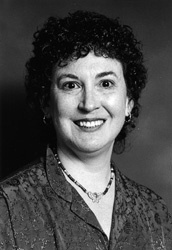Urban Heat Takes Toll on Elderly and Unfit
 A “hot” time in the city can turn deadly when it comes to heatstroke. In recent years, killer heat waves have taken their toll around the world from Chicago to Paris. And today’s contemporary urban landscape—from concrete buildings to dwindling green space—has only made matters worse, according to Katherine Kaufer Christoffel, MD, MPH, professor of pediatrics and preventive medicine.
A “hot” time in the city can turn deadly when it comes to heatstroke. In recent years, killer heat waves have taken their toll around the world from Chicago to Paris. And today’s contemporary urban landscape—from concrete buildings to dwindling green space—has only made matters worse, according to Katherine Kaufer Christoffel, MD, MPH, professor of pediatrics and preventive medicine.
In an online article at ArchitectureWeek.com this summer, Dr. Christoffel appealed to architects to address a growing public health concern. “As a physician with an interest in public health, I have been observing how the built environment affects thermal well-being,” wrote this director of the Center for Obesity Management and Prevention at Children’s Memorial Research Center. “Every summer more Americans die from heat than from more publicized natural disasters. In 2003, about 12,000 people died in Europe during a two-week heat wave.”
While air conditioning may seem like a logical solution, it is not universal and often too costly for poor urban dwellers, remarks Dr. Christoffel. Factors such as nonreflective roof top surfaces and “canyons” produced by tall buildings work to trap summer heat and humidity in the heart of most cities. Those two climate conditions—separately or, particularly, together—can adversely affect the health of the elderly and physically unfit. Urging those who have a hand in urban planning to help cities and their residents cool off by using heat-dissipating building materials, window orientation, or creative shading techniques, Dr. Christoffel believes architects must be a part of the public health discussion.
“Architects and others who design our environment are public health professionals,” she explains. “They can provide leadership. The health folks can’t bring about change without their participation.”
Dr. Christoffel’s interest in the built environment began some 20 years ago. Studying pedestrian injuries in children, she found that many aspects of urban planning such as street widths, availability of parks, and shadows cast by buildings influenced the probability of kids being hit by cars. Her work on heat was to have led to a chapter for a textbook on the topic. When the book project was shelved, Dr. Christoffel decided to leap frog the academic route and try generating awareness of the dangers of urban heat among a wider audience.
Pitching article ideas to the popular press, Dr. Christoffel wrote an op-ed piece for the International Herald Tribune in 2003. The ArchitectureWeek.com article is her first attempt at reaching a more focused segment of the general population who are “clearly germane” to the topic.
While this pediatrician views the heat work as a hobby of sorts, she hopes to someday bring together an interdisciplinary working group as well as explore local advocacy efforts in the Windy City.
“Chicago—including our mayor—is alert to this issue and beginning to address it, for example, with roof top gardens,” remarks Dr. Christoffel. “But the heat disaster of 1997 makes it clear that Chicago exemplifies the problem I am discussing.”
To see the full-length article, visit ArchitectureWeek.com






